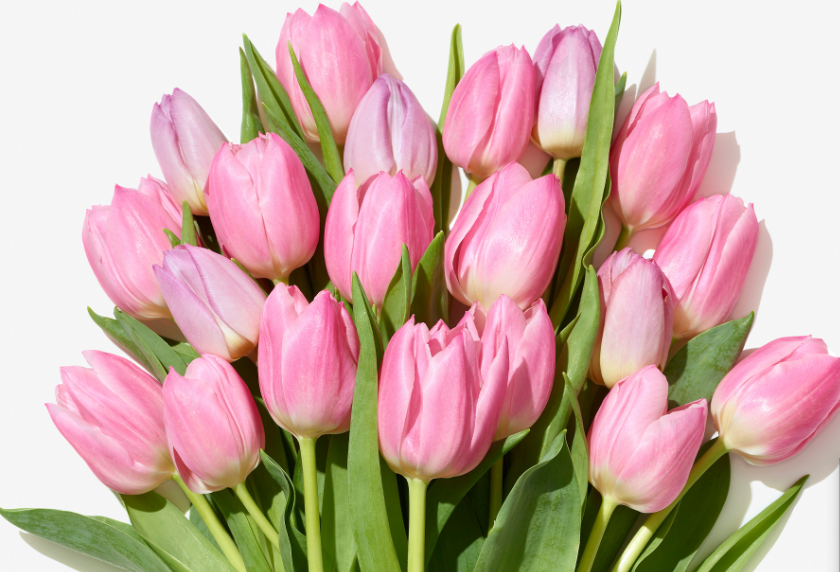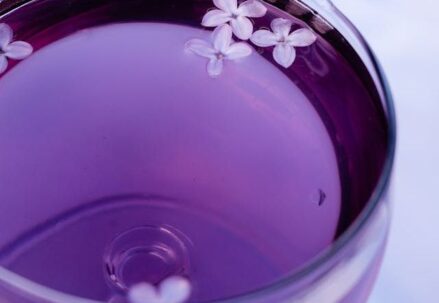In the realm of sexual symbolism, what might the hue pink embody? This question invites us into a labyrinthine exploration beyond simple aesthetics. We are nudged towards a multi-tiered universe of perception and socio-cultural implications that have evolved over time.
The delicate intermingling of red and white births pink – an understated color carrying connotations linked to passion, eroticism, sweetness, innocence. It encapsulates an array of intricate contexts within sexuality. The softer shade as compared to bold red often signifies a tenderer facet of love and romance – one touching upon the emotional stratum in intimate relationships.
Navigating through our modern-day world reveals how pink has been embraced expansively across various sexual territories – from sexual health education to LGBTQ+ representation. Its widespread usage particularly that of hot pink can be traced along invisible threads leading back to historical happenings and movements.
This vivid pigment henceforth morphs into more than just a color; it becomes an emblem symbolizing empowerment, liberation, identity – ultimately expressing oneself in open dialogues about sexuality. As we dive deeper into understanding this seemingly innocent hue’s role within sexual contexts, it uncovers profound meanings which resonate across diverse cultures and boundaries: each layer revealing a new interpretation identified with its use.
The Symbolism of Pink in Sexuality
Venturing into the labyrinth of color symbolism, pink has been historically tethered to femininity and gentleness. However, its sexual implications can be manifold and subtle. When one scratches the surface on this question – what does pink signify sexually for a male? – the responses unfurl beyond conventional stereotypes. Pink may be tied up with feelings of romance, affection, and softness, engendering a vulnerability that forms an indispensable part in emotional closeness. Therefore, for a male who chooses to wear or support pink might hint at welcoming these attributes.
Diving deeper into the sea of sexuality significance, the symbolism attached to pink experiences an energetic metamorphosis as it becomes entangled with personal interpretations, societal standards and cultural aspects. Once brushed aside as ‘female color’ in past eras, today’s world sees pink standing tall against gender norms especially among males. To adopt pink is often seen as quietly defying society’s traditional expectations while establishing an atmosphere rooted in authenticity and emotional honesty. This transformation in how we perceive colors underlines the evolution of sexual perceptions that step outside binary confines thus heralding the rosy shade as representing sexual fluidity and acceptance.
Pink: The Color of Romance and Love

Frequently, the color pink is perceived as an emblem of gentleness, delicacy, and purity. Undeniably, these undertones are quite conspicuous in softer tints such as bubblegum pink. So how do we unpack the sexual connotations associated with bubblegum pink? At first glance, it might evoke feelings of innocence and simplicity reminiscent of the flavor’s association with juvenile delight. Yet, it bears noting that interpretations of colors can undergo significant shifts based on cultural backgrounds and personal biases.
Additionally, delving into its usage within romantic frameworks can offer further insights into its sexual symbolism. This vibrant shade frequently acts as a metaphor for blissful moments of all-consuming love – those initial dizzying sensations of infatuation and sweetness accompanying new-found romance. But its interpretation doesn’t cease at nascent stages of affectionate bondings- it transcends them! In the sphere of sexuality too; bubblegum pink signifies a light-hearted, tender approach to sensual experiences marked by non-aggression. It stands tall for concepts like consent, comfortability and mutual pleasure transforming itself from just another hue to embodying meaningful conversations around sexuality.
Historical Interpretations of the Color Pink in Sexuality
In the swirling maelstrom of hues, each carrying a multitude of interpretations across epochs, pink emerges as an undeniably potent player. Its ties to notions of gender and sexuality are deeply embedded in the warp and weft of civilization’s narrative tapestry. The question “What does pink signify from a girl?” has seen its answer morphing throughout the centuries. We traverse back to antiquity where pink was seen as a symbol for vitality and youthfulness before getting cocooned into feminine confines during the early 1900s.
As we delve into the Victorian epoch, one finds that pink was revered as life’s vibrant shade; it hinted at rosy cheeks flushed with health and youthful allure. Fast forward then to America in her flapper era – 1920s-1930s – retail establishments were circulating an intriguing idea: blue for girls, and contrarily enough – yes, you guessed right – pink for boys! A notion quite contrary indeed to our present-day consensus which deems pink unmistakably feminine.
However, around about World War II’s time frame – circa 1940s – societal norms took a perceptible shift: blue became synonymous with boys while girls claimed ownership over pink. Thus began another chapter in history wherein this cotton candy hue was etched resolutely onto femininity’s canvas; subsequently transforming society’s interpretation on what exactly is meant when one perceives ‘pink’ from a girl.
The Role of Pink in LGBTQ+ Representation
Emerging from the ashes of World War II, the hue known as pink has evolved to embody elements linked to the LGBTQ+ community, predominantly within the gay subset. Initially, this color was tied with homosexuality due to its inherent femininity symbolism. Over time though, it has morphed into a luminous symbol of unity and pride, intertwined with bold self-expression and emancipation. This is prominently displayed in numerous global pride events where participants dress themselves in vibrant blends of pink — a vivid testament to their group’s diversity and vitality.
Delving deeper into societal semantics, what implications arise when one labels someone as ‘pink’? In contemporary society and within personal circles alike, dubbing someone as ‘pink’ could potentially denote their non-heterosexual orientation in an understated manner. However, such interpretation isn’t universally recognized. The comprehension varies significantly depending on cultural nuances and individual contexts. The employment of ‘pink’, along with its varied interpretations continues to morph within the LGBTQ+ sphere — underlining its pivotal role in illuminating the rich tapestry of sexual orientations and identities encapsulated within today’s community.
- The color pink has transitioned from being a symbol of femininity to representing unity and pride within the LGBTQ+ community.
- Pink is prominently utilized in global pride events, signifying diversity and vitality within the community.
- Labeling someone as ‘pink’ in contemporary society could potentially indicate their non-heterosexual orientation, albeit subtly.
- However, such interpretations aren’t globally accepted due to cultural differences and individual contexts.
- The use of ‘pink’, along with its diverse connotations continues to evolve within the LGBTQ+ sphere.
- This underlines its critical role in highlighting the wide array of sexual orientations and identities present in today’s society.
Further exploring this topic, it’s interesting to note how this color has been employed across various mediums that cater or relate to the LGBTQ+ audience. From literature to filmography — pink often permeates these platforms as an implicit nod towards queer themes.
Moreover, numerous brands have adopted shades of pink for their logos or merchandise aimed at supporting or raising awareness about LGBTQ+ rights – further cementing the association between this hue and such causes.
However, while pink’s association with non-normative sexuality is now well-established globally — it also carries a risk of oversimplification; reducing complex identities into a single shade can inadvertently lead to stereotyping.
Given these considerations:
- Literature and films frequently utilize pink as an indirect reference towards queer themes.
- Many companies incorporate shades of pink into their logos or products intended for promoting or increasing awareness about LGBTQ+ rights – reinforcing its connection with these issues.
- Despite its established link with non-normative sexuality worldwide— there exists a danger of oversimplification by associating complex identities solely with one color which may unintentionally contribute towards stereotype formation.
Exploring the Psychological Implications of Pink in Sexuality
In the sphere of romance, one cannot help but associate the blush-hued color pink with sentiments of adoration, gentleness, and solicitude. This pastel shade is universally hailed as the emblematic tone for love, extending beyond physical magnetism to encapsulate emotional connections in its tender spectrum. When queried about what pink symbolizes romantically, these aforementioned factors are inevitably conjured.
The psychological sway held by this rosy hue on human emotions and conduct is rather intriguing. In matters involving sexuality, it has been observed that pink can provoke sensations of closeness and warmth – bolstering a sense of assurance and contentment in relation to one’s sexual persona. It isn’t sheer happenstance that spaces associated with amorous feelings frequently employ hues from the pink palette; these shades foster an ambiance conducive to empathy, acceptance – a genuine heart-to-heart connection. Henceforth when viewed through a sensual lens, pink embodies affirmations of affectionate softness intertwined with emotional bonding – laying bare its significant psychological ramifications.
The Use of Pink in Sexual Health Education
In the sphere of enlightenment pertaining to sexual health, the selection of pink as a color holds immense emblematic significance. This hue, which is commonly linked with the concepts of femininity and softness, finds prolific use in pedagogical tools employed for fostering discussions regarding wellbeing and health in a manner that’s affable and devoid of intimidation. To exemplify, one can look at breast cancer awareness – an issue deeply intertwined with sexual health – famed for its symbolic representation via a pink ribbon.
The very strategy that involves employing this color serves to amplify the visibility of such campaigns, making them more identifiable within society while simultaneously reducing their association with taboo.
Beyond mere recognition, there’s also an important role played by the vibrancy and warmth inherent in pink when it comes to rendering sensitive topics more humane. This subdued yet captivating shade brings along entrenched associations with affectionate tenderness and love; serving as comforting conduits for facilitating dialogues around delicate subjects. In doing so, it effectively reduces any stigma associated with conversations on sexual health while encouraging openness and comprehension.
Ultimately then, through thoughtful implementation of symbolic elements like pink hues within these campaigns dedicated towards sexual wellbeing; education about crucial aspects related to maintaining our sexual health finds successful propagation alongside enhanced levels of awareness.
FAQs
The shade of pink is frequently linked with sentiments of affection, courtship and womanliness. In amorous environments, it signifies receptiveness, empathy, and comprehension – attributes which contribute to its recurrent utilization in sexual health enlightenment.
Pink’s association is often drawn towards love and romance – feelings deeply intertwined with sexuality. The gentle warmth that this color exudes is generally perceived as non-aggressive and inviting making it an effective medium for disseminating sensitive subjects such as intimate health education.
From ancient times, the tone pink has been identified with femininity – consequently relating it to women’s sensuality. However, over periods this colour has transmuted into a symbol for empowerment and consciousness about one’s own body; personifying resilience against sexual health predicaments.
A historically prominent color for LGBTQ+ representation has been Pink; representing diversity ,acceptance,and visibility.These elements are fundamental in formulating an inclusive sex-ed curriculum catering to diverse sexual orientations & gender identities.
The choice of color ‘Pink’ leads one towards feeling comforted,safe,and accepted which are key emotions when discussing delicate topics like Sexual Health Education.It helps promote open conversations,reducing stigma & enhancing better understanding related to sexual health matters.
‘Pink’ gets incorporated as a visual aid while imparting knowledge regarding Sex-Education due to its warm & positive vibes.The comforting environment created through use of ‘Pink’ fosters open conversations on intimate topics thus making the learning process more impactful.
Absolutely! The usage of Pink in sexual health education can certainly act as an efficient tool to diminish stigmas and misunderstandings. This warm hue, with its accepting undertone, is capable of creating a space where understanding thrives, thereby encouraging individuals to participate in dialogues about sexual health devoid of any fear or awkwardness.




